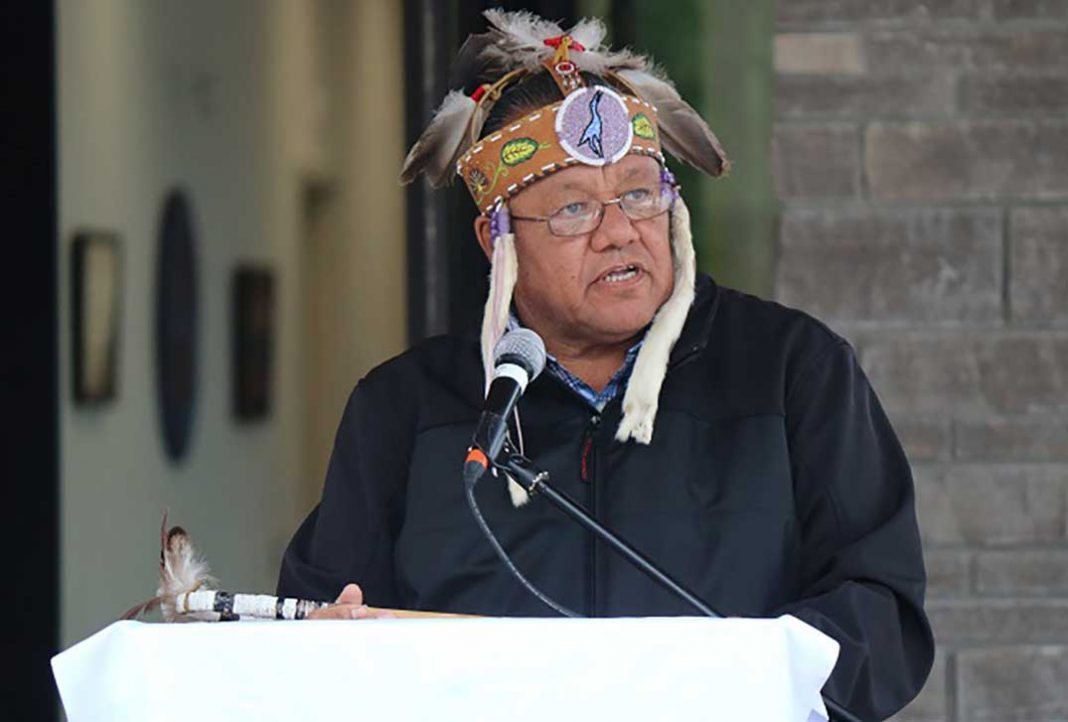TORONTO – More than 116 First Nations people in Ontario lost their lives due to opioid-related poisoning during the first year of the COVID-19 pandemic. That’s an increase of 132 percent over the previous year, according to a new report prepared by the Chiefs of Ontario, in collaboration with the Ontario Drug Policy Research Network. This compares to a 68 percent rise amongst the rest of the population over the same period.
The report, “Impacts of the COVID-19 pandemic on opioid-related poisoning among First Nations in Ontario,” examined patterns in hospitalizations and deaths due to opioid-related poisoning among First Nations and non-First Nations people in Ontario. A second report delved into “Opioid Use, Related Harms, and Access to Treatment among First Nations in Ontario.”
The number of First Nations people who visited the hospital for an opioid-related poisoning jumped to 816 during the first year of the pandemic, compared to 601 for the year prior (March 17, 2019 to March 16, 2020), an increase of 35.8 percent. This contrasts with an increase of 16.4 percent during the same period for non-First Nations people (8,662 hospital visits during the pandemic compared to 7,441 in the year prior).
Between 2013 and 2019, opioid use was higher among First Nations people, particularly those living off the reserve, compared to non-First Nations in Ontario and First Nations have seen an increase in opioid-related poisonings since 2017, largely due to the growing presence of fentanyl. Fentanyl-related poisoning has contributed to 87 percent of the opioid-related deaths, which aligns with broader trends across Ontario.
Opioid-related deaths involving cocaine for First Nations people also rose during the pandemic while opioid-related deaths involving methamphetamine decreased. This contrasted to an increase in the overall role of stimulants as a direct contributor to opioid-related deaths among non-First Nations people, where there were significant increases in both cocaine and methamphetamine involvement. However, the percentage of methamphetamine involvement in opioid-related deaths among First Nations remains higher than for non-First Nations, highlighting the continued support needed for First Nations communities to address the combined use of opioids and methamphetamines.
Benzodiazepine involvement in opioid-related deaths significantly increased during the pandemic for both First Nations and non-First Nations, primarily due to a significant increase in the use of etizolam, a benzodiazepine that is not approved for use in Canada. The administration of naloxone does not reverse benzodiazepine toxicity, further complicating the response to opioid related poisoning as well as responses to the overdose crisis among First Nations people.
“First Nations have been disproportionately affected by the overdose crisis,” stated Ontario Regional Chief Glen Hare. First Nations have a mortality rate approximately four times higher than the rest of the population in opioid-related deaths. This is even higher among off-reserve First Nations and those aged 44 years and younger.
“The use of opioids and other substances continues to surge during the COVID-19 pandemic, producing conditions that further increase overdoses and deaths.”
While amplified further by the COVID-19 pandemic, the opioid-use epidemic has been disrupting First Nations families and communities for years. There were calls to action from both The Truth and Reconciliation Commission’s report and in the final report from the National Inquiry into Missing and Murdered Indigenous Women and Girls, which called upon all governments to “provide adequate, stable, equitable and ongoing funding for Indigenous-centred and community-based health and wellness services.”
These new reports are “very explicit in providing evidence that governments need to correct the underfunding that has been occurring for years to make effective progress on addressing the overdose crisis in First Nations communities,” continued Regional Chief Hare.
Enough studies, he stressed. “We’re studied out.” He pointed to homelessness, another critical issue for First Nations people. “For the last 40 years, there’s been no action, just meetings, meetings and meetings. We’ve got to do something.”
Action is what’s needed, Regional Chief Hare said. “What we see and hear right now, and not only because of COVID-19, is a pandemic. It’s out of control. We need action and we need the government on board. There are people ready to go now, ready to do something and who want to do something and I think we should see that opportunity and work together on this. We can’t do it alone.”
There are communities strengthening community capacity through the development of community-led programs, he acknowledged. “However, the work to implement the recommendations in these reports must expand in earnest, through true collaboration between all sectors, to see real progress, prevent future tragedies and strengthen the healing processes so desperately needed in First Nations communities.”
“It will never be enough though,” he continued. “There’s the timing, too. There are disasters everywhere. Look at British Columbia and the east coast. We cannot put this in a desk while we address those. Let’s not wait until it’s something like COVID. We can’t wait. It’s here.”





